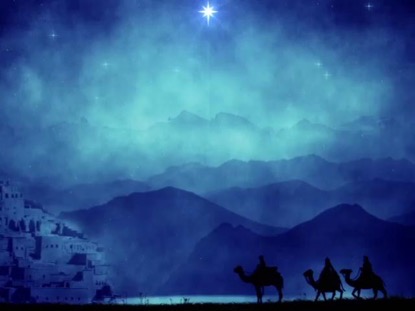The other day I was listening to the “Voices of Greater Yellowstone” podcast. The current episode is an interview with the wildlife photographer Ronan Donovan and his sharing about the use of images to tell stories. At one point in the interview the subject of awe was discussed and the photographer, sharing from his experience of travelling to some of the remotest regions of the world and having amazing encounters with wildlife, shared that he believes awe (this is my paraphrase) is connected to those moments when we forget self and are caught up into something so much more bigger than us. That sense of awe and wonder is connected to those moments in life.
The three magi were caught up in awe. They saw the star, they interpreted that something much bigger than themselves and their particular tribe, culture and nation was at work. After all, they journeyed to a foreign land to give homage to a newborn foreign king.
Awe allowed the magi to do two important things that are relevant for all believers in every age. Awe allowed the magi to choose sacrifice over comfort and to choose wisdom over knowledge.
It had to have been a sacrifice for the magi to depart their native land in order to undertake a journey of unknown length following a star in hopes of finding a newborn king. Such a journey requires sacrifice and probably even brought some ridicule. In contrast, the priests and scribes of Herod’s court, the very ones to whom the Messiah is promised, would not even set out to the nearby Bethlehem. It seems that for them the comfort of the court was much more important than the sacrifice of the journey. Allowing their hearts to be captured by awe, the magi chose sacrifice and this is to their everlasting credit.
The chief priests and scribes had knowledge. When asked, they were able to point to the passage that the newborn king was to be born in Bethlehem but knowledge does not equal wisdom. In the first chapter of the Book of Wisdom we read, For the holy spirit of (wisdom) flees deceit and withdraws from senseless counsels and when injustice occurs it is rebuked. Wisdom is tied to integrity of life. Knowledge is not. One can be knowledgeable about something – even the things of faith – without integrity of life but one cannot possess wisdom without integrity. The magi left the deceit and senseless counsels of Herod’s court and did not return there. They went home a different way. The magi chose integrity of life and by this they welcomed wisdom.
Awe – those moments when we forget self and are caught up into something so much bigger than ourselves. Awe allows for the saving choices of sacrifice and wisdom. Like the magi, we also are invited to be overjoyed at seeing the star and to set out on the journey of encountering the newborn king. The end of the Christmas season is really just the beginning of the awe-filled journey of coming to know Christ more truly, love him more dearly and follow him more closely.



 During the weeks of Advent we hoped for and awaited the coming of the Messiah.
During the weeks of Advent we hoped for and awaited the coming of the Messiah. Caesar demanded a census and the whole world was in motion and turmoil.
Caesar demanded a census and the whole world was in motion and turmoil.